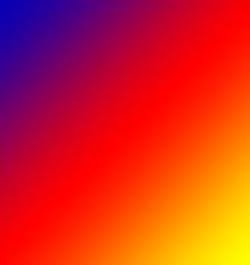Basic Color Sensors
Pepperl+Fuchs has two types of color sensors. "Our contrast sensors detect differences between colors," says Jeff Allison, P+F's product manager. "Our color sensors detect a specific color." Color sensors often use RGB (red, green, blue) technology. Each color is emitted in pulses from the sensor's transmitter, and its receiver evaluates the pulsed-light reflected from the target. Most color sensors are single-channel (sense only one color), but there are advances that allow multiple color identification. Alternatively, contrast sensors operate on the RGB principle as well, but automatically select the optimal color source for an application based on target and background color.
Allison says applications such as date code/bar code check, tamper-proof seal confirmation, lid insert verification, shrink-wrap presence, label presence/position, color sorting, and blister packaging typically are suitable for color and contrast sensors.
More Advanced Color Sensors
"Luminescence sensors are a specific type of contrast sensors," states Allison. "Like contrast sensors, they distinguish different conditions by emitting a light onto a target, and evaluating the reflected light. However, luminescence sensors emit ultraviolet (UV) light, unlike the visible light spectrum emitted by color and contrast sensors (see figure). Materials called luminophores react specifically to UV light, and are inherently present in the target or are added to it. These materials are stimulated by UV light, and emit radiation in the visible light spectrum." This process is called photoluminescence. The color or wavelength of the received light depends in part on the type of luminophore.
Another color sensor supplier, Delta Computer Systems recently released a multiple-color sensor based on Delta's pulsed LED technology, and it offers the promise of robust solid-state lighting with a wide range of color sensing from blue to near-infrared. "The CS24D reads colors of textured and other difficult materials more accurately than typical color sensors by using a large sensing area and consistent, diffuse lighting from its 24 ultra-bright LEDs," says Steve Nylund, Delta's CEO. "Sorting can be done using color only or both color and intensity, or it can be optimized to the teach data." Delta's ColorSense software for the CS24D includes setup wizards and teach modes for faster configuration, teaching, and optimization of sensors operating either standalone or connected to PLCs.
Ultimate Sensor: Color Vision
The machine vision market still is expanding rapidly, but how many applications really achieve 100% of what they were intended to achieve? Experience suggests that five years ago probably less than 60% of installations were meeting all customer expectations. As digital signal processor (DSP) and field programmable gate array (FPGA) processing power and speed increase and algorithm development improves, there has been substantial improvement in installation success. But much of that success is due to education. Just now, users are beginning to understand machine vision in the context necessary to assure installation success, which requires keen understanding of key vision attributes.
Even with this understanding, the huge majority of successful applications incorporate gray-scale technology, rather than color.
However, Paul Kellet, director of marketing surveys, Automated Imaging Assn., suggests that color vision is on the upswing, and will be a large part of the double-digit growth enjoyed in machine vision. "The overwhelming portion of cameras sold today are monochrome, with color cameras representing only about one-fourth of total camera sales in 2005 and 2006," he says. "Color vision installations will increase steadily to a certain point, and then level off, as the average price of color cameras declines. It should be noted that machine vision includes applications for which color doesn't make sense such as OCR, OCV, bar code reading, and gauging."
To explain how color vision works, PPT Vision, which has a series of four different smart color cameras, offers the following summary:
- Most color cameras use a grayscale imager with a Bayer filter.
- Intensity passing through 2x2 pixel kernels are interpreted and converted into a color image.
- There are twice as many green pixels since the human eye is most sensitive to green.
- Color images contain 24 bits of information per pixel (grayscale has 8 bits), giving a color camera three times more dynamic sensitivity.
An installation demonstrating the flexibility of color vision technology was done by Modular Vision Systems in Caracas, Venezuela. MVS installed several color systems at local brewer, Cerveceria Regional, where four turnkey foreign bottle inspection stations are deployed.
"Sometimes bottles with different colors, shapes, designs and ACLs [applied ceramic labels] get filled by mistake during the filling process," says MVS director Carlos Diaz. These foreign bottles should be discarded from the process to ensure that only the bottles with the regional brand are packaged and delivered to their final customers." MVS provided a solution using a mirror array to provide an image of the back of the bottle. Each camera is trained to look at the front image directly and the reflected rear image in the same field of view at the rate of 1,200 bottles per minute. Analyzing the dual image for proper color matches determines whether the bottle is passed or rejected. Color vision capabilities plus the optical arrangement allows the systems to reportedly reach efficiencies beyond 99.8% and with very low false rejection.
The previous solution was a team of 10 people per line that could not respond with a consistent result at real production speeds.
About the Author
Loren Shaum
Loren Shaum

Leaders relevant to this article:


